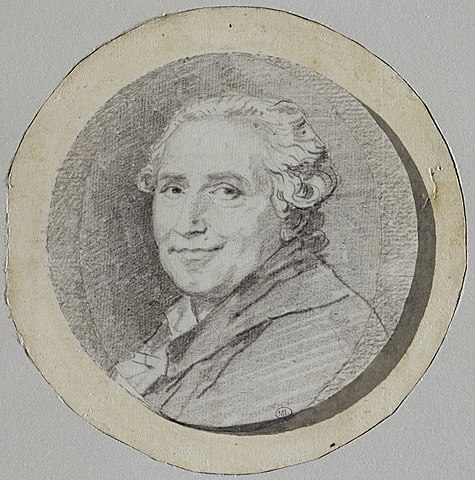
Born: 5 April 1732, Grasse
Died: 22 August 1806 (aged 74)
Period: Rococo
The Life of Jean-Honoré Fragonard
Jean-Honoré Fragonard was a French painter and printmaker whose work is synonymous with the Rococo style of art, characterized by its playful, decorative, and whimsical qualities. Born in Grasse, France, Fragonard moved to Paris with his family when he was six. He demonstrated an early talent for art and began his formal training under François Boucher, a leading Rococo artist, who quickly recognized his pupil’s talent and recommended him to the French Academy in Rome to study under Charles-André van Loo.
In 1752, Fragonard won the prestigious Prix de Rome with his painting “Jeroboam Sacrificing to the Golden Calf,” which allowed him to study at the French Academy in Rome from 1756 to 1761. His time in Italy had a profound influence on his artistic development, exposing him to the works of the Renaissance and Baroque masters. Despite the influence of the classical and baroque styles, Fragonard’s work is firmly rooted in the Rococo, with its emphasis on lightness, grace, and pleasure.
Fragonard is best known for his exuberant and erotic paintings that epitomize the Rococo’s indulgent aesthetics. His artworks often depict scenes of love, sensuality, and pastoral pleasure, filled with a lightness and fluidity that convey movement and emotion with seeming effortlessness. Among his most famous works are “The Swing” (1767), which perfectly encapsulates the frivolity and erotic undertones of Rococo art, and “The Progress of Love” series (1771–1773), created for Madame du Barry, Louis XV’s mistress.
Despite his success, the French Revolution brought about a change in artistic tastes, and the Rococo style fell out of favor, replaced by the more sober and moralistic Neoclassicism. Fragonard’s work, deeply associated with the ancien régime’s excesses, was largely forgotten by the public, and he spent the latter part of his life in relative obscurity.
Fragonard’s contribution to art history, however, remains significant. His mastery of brushwork, use of color, and ability to capture fleeting expressions and moments of intimacy have cemented his reputation as one of the Rococo period’s leading figures. Today, Fragonard’s paintings are celebrated for their beauty, technical skill, and as a testament to the last flourish of French aristocratic opulence before the revolution.
Jean-Honoré Fragonard’s Notable Works
Jean-Honoré Fragonard, a master of 18th-century French Rococo painting, created a vast array of works renowned for their exuberance, charm, and sensuality. Here are ten of his most famous and celebrated pieces:
- The Swing (1767) – Perhaps Fragonard’s most iconic work, this painting epitomizes the frivolity and eroticism of the Rococo era. It depicts a young woman on a swing, pushed by an older man, as her lover watches from below, enjoying a privileged view.
- The Progress of Love series (1771-1773) – Commissioned by Madame du Barry, the last maîtresse-en-titre of Louis XV, this series for the Château de Louveciennes illustrates the stages of romantic love. It’s a masterpiece of narrative and decorative art.
- The Secret Meeting (1771) – Part of “The Progress of Love” series, this painting captures a moment of intimate anticipation between lovers, showcasing Fragonard’s skill in portraying romantic secrecy.
- The Bolt (1777) – This work is a prime example of Fragonard’s talent for capturing passionate moments. It depicts a lover bolting the door for a clandestine encounter, emphasizing the urgency and excitement of forbidden love.
- The Love Letter (c. 1770s) – This painting showcases a young woman receiving a love letter, a popular theme that allowed Fragonard to explore the emotions and private moments of his subjects.
- Blind Man’s Bluff (c. 1750-1752) – An early work that already hints at his Rococo style, depicting a playful game in a lush garden, emblematic of the era’s fascination with nature, love, and play.
- The Stolen Kiss (c. 1780s) – This intimate painting captures a secretive kiss between lovers, hidden away from prying eyes, illustrating Fragonard’s mastery in depicting fleeting moments of passion.
- Jean-Claude Richard, Abbé de Saint-Non (c. 1769) – A departure from his more frivolous themes, this portrait of the artist’s patron and friend showcases Fragonard’s skill in more formal compositions.
- The Shepherdess (c. 1750-1752) – Standing as a testament to Fragonard’s versatility, this pastoral scene depicts a young shepherdess in a serene landscape, reflecting the Rococo’s romanticization of rural life.
- A Young Girl Reading (c. 1770) – This painting, featuring a young woman engrossed in a book, is celebrated for its luminous color palette and the delicate portrayal of the subject’s absorption in her reading.
Fragonard’s works are characterized by their dynamic compositions, vibrant light, and a delicate touch that captures the ephemeral beauty of his subjects. These pieces reflect the height of Rococo artistry, with Fragonard’s unique ability to convey the subtleties of human emotion and the pleasures of life.